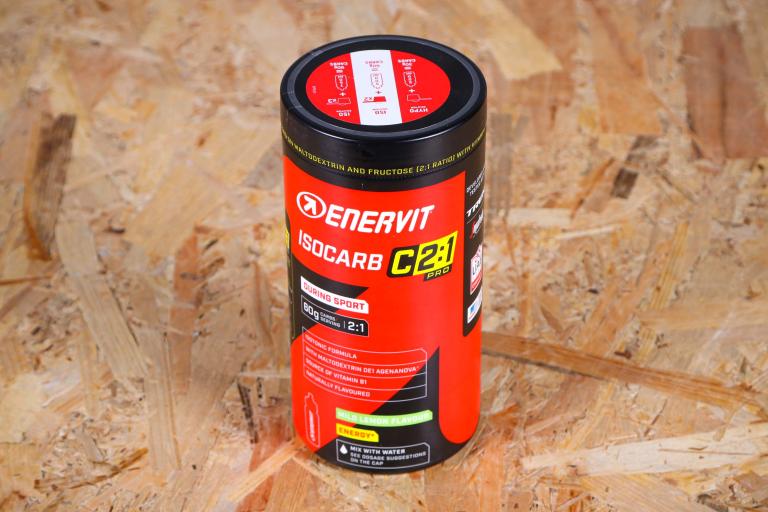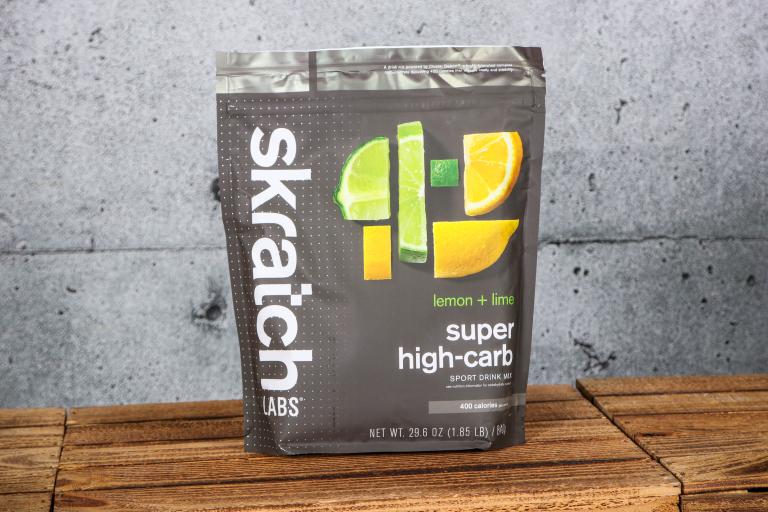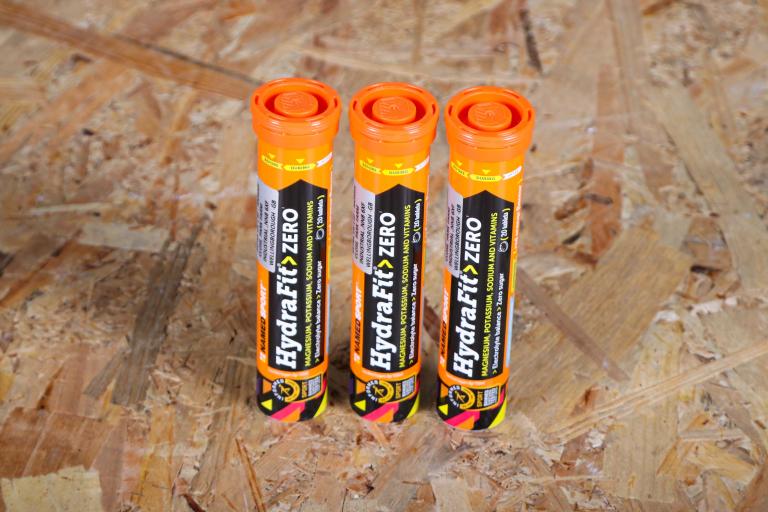- News
- Reviews
- Bikes
- Components
- Bar tape & grips
- Bottom brackets
- Brake & gear cables
- Brake & STI levers
- Brake pads & spares
- Brakes
- Cassettes & freewheels
- Chains
- Chainsets & chainrings
- Derailleurs - front
- Derailleurs - rear
- Forks
- Gear levers & shifters
- Groupsets
- Handlebars & extensions
- Headsets
- Hubs
- Inner tubes
- Pedals
- Quick releases & skewers
- Saddles
- Seatposts
- Stems
- Wheels
- Tyres
- Tubeless valves
- Accessories
- Accessories - misc
- Computer mounts
- Bags
- Bar ends
- Bike bags & cases
- Bottle cages
- Bottles
- Cameras
- Car racks
- Child seats
- Computers
- Glasses
- GPS units
- Helmets
- Lights - front
- Lights - rear
- Lights - sets
- Locks
- Mirrors
- Mudguards
- Racks
- Pumps & CO2 inflators
- Puncture kits
- Reflectives
- Smart watches
- Stands and racks
- Trailers
- Clothing
- Health, fitness and nutrition
- Tools and workshop
- Miscellaneous
- Buyers Guides
- Features
- Forum
- Recommends
- Podcast
review
 Osmo Nutrition Acute Recovery
Osmo Nutrition Acute Recovery£29.99
VERDICT:
Recovery drink designed to help recovery and boost performance; nice taste, but pricey
Weight:
280g
Contact:
osmonutrition.com www.2pure.co.uk
At road.cc every product is thoroughly tested for as long as it takes to get a proper insight into how well it works. Our reviewers are experienced cyclists that we trust to be objective. While we strive to ensure that opinions expressed are backed up by facts, reviews are by their nature an informed opinion, not a definitive verdict. We don't intentionally try to break anything (except locks) but we do try to look for weak points in any design. The overall score is not just an average of the other scores: it reflects both a product's function and value – with value determined by how a product compares with items of similar spec, quality, and price.
What the road.cc scores meanGood scores are more common than bad, because fortunately good products are more common than bad.
- Exceptional
- Excellent
- Very Good
- Good
- Quite good
- Average
- Not so good
- Poor
- Bad
- Appalling
Osmo is a relatively new brand in the UK, with products including this Acute Recovery drink, to help muscle recovery after exercise. You mix some of this powder with water and consume it as soon as your race ends or you step off the turbo trainer. In theory, you'll be stronger when you ride again. In practice, it seems to work well, but it ain't cheap.
Osmo's flagship product is Active Hydration, which we first mentioned back in mid-2013, and reviewed here. But whereas Active Hydration is designed for use during a race or training ride, Acute Recovery is designed for drinking afterwards.
Osmo have different product ranges for male and female athletes. We're testing the male version here.
A recommended serving of 24g provides 15g of protein and 6g carb. There's zero fat or fibre. These proportions (about 60% protein and 25% carb) are based on scientific studies, many of which are quoted on the Osmo website research - and many of which are conducted by Dr Stacy Sims, who happens to be Osmo's chief research officer and co-founder.
It's worth noting that the protein:carb proportions differ from those found in recovery products from some other brands, such as SIS Rego Rapid Recovery (26% protein, 63% carb).
To get the protein, the ingredients of Osmo Acute Recovery include whey and casein; in layman's terms these two different types of protein repair the muscles at different rates. There's also sucrose, plus something called OsmoAcu Beverage Base Blend (which, according to the Osmo website, is a mix of sucrose, trisodium citrate, potassium citrate, calcium citrate, and l-glutamine), plus some other minerals, green tea extract and soy lecithin.
There's also a dash of organic vanilla bean powder – this drink is available only in vanilla favour - which gives a slightly bitter tang. The taste is unexpected, but not unpleasant , and refreshing when you get used to it. The texture is like weak milkshake when mixed with water (although the label recommends also mixing this product with almond milk – which may alter the protein:carb proportions slightly).
A 380g tub of Osmo Acute Recovery drink gives 16 drinks using the recommended 24g serving, but closer inspection of the label indicates that this amount is recommend for athletes with a body weight under 50kg. For those over 50kg, 32g is recommended. Over 60kg, it's 48g. Over 70kg, it's 60g, and so on.
For most adult males, that means getting through a tub of this stuff after half a dozen races or training sessions. With a tub going for around £30 from most on-line stores, that's around a fiver a drink. For many cyclists, that will be simply too much. For others, it will be a price worth paying if they see improved performance.
I tested Osmo Acute Recovery over a period of about a month, using it after several hard training sessions, and I certainly felt fine when I went next out on the bike. On that basis, I saw improved performance. However, I usually feel fine after using recovery drinks from other manufacturers, so my experience is not conclusive. As with most nutrition products, the only way to be sure if Osmo Acute works for you is to try it. If it does the job, stick with it. If it doesn't, then try something else.
Verdict
Recovery drink designed to help recovery and boost performance; nice taste, but pricey
road.cc test report
Make and model: Osmo Nutrition Acute Recovery
Size tested: Vanilla
Tell us what the product is for, and who it's aimed at. What do the manufacturers say about it? How does that compare to your own feelings about it?
This is a recovery product, designed to be consumed immediately after exercise. The Osmo website says: "When you exercise, you stress your body. During recovery you adapt to those stresses, getting stronger and more efficient. Osmo Acute Recovery is the result of over ten years of Dr. Stacy Sims' lab and field research with elite athletes to Speed Recovery, Optimize Training Adaptions [sic], and Rapidly Restore Glycogen. Osmo uses only the highest quality natural ingredients like organic vanilla because putting the best in your body is the only way to get the best out of it."
Rate the product for performance:
9/10
Performance is very good, in that I consumed Osmo Acute Recovery after several hard training sessions, and felt fine when I went next out on the bike. Not scientific, I know, but based on my experience, other cyclists might like to give this product a try. If it works, stick with it. If it doesn't work for you, try something else.
Rate the product for value:
6/10
Value is not good if compared on price alone against ostensibly similar products from other manufacturers. A 380g tub of Osmo Acute Recovery costs almost 30 quid, and gives 16 drinks if you weigh less than 50kg, and around six to eight drinks if you weigh over 70kg, working out at almost £5 per drink. In contrast, a 500g tub of SIS Rapid Recovery costs around £11, and gives around 10 drinks, working out very roughly a pound a drink. It's important to note, though, that these products have different formulations, so it's not comparing direct like-for-like.
Tell us how the product performed overall when used for its designed purpose
Overall, Osmo Acute Recovery performed very well in that I consumed Osmo Acute Recovery after several hard training sessions, and felt fine when I went next out on the bike. Based my experience, I'd say Osmo Acute Recovery is definitely worth a try.
Tell us what you particularly liked about the product
Refreshing taste - once you got used to it.
Did you enjoy using the product? Yes.
Would you consider buying the product? No.
Would you recommend the product to a friend? I'd recommend they try it, to see if it worked better for them than other recovery products.
Anything further to say about the product in conclusion?
Osmo Acute Recovery performed very well. I drank some after training, and felt good next time I went out. On that basis it would score a 9. However, the price is very high compared to similar products (even if it's a price you're prepared to pay for increased performance) so that docks two points, giving an overall score of 7.
About the tester
Age: 53 Height: 5ft 10 / 178cm Weight: 11 stone / 70kg
I usually ride: an old Marin Alp, an old steel classic My best bike is: an old Giant Cadex (can you see a theme here?)
I've been riding for: Over 20 years I ride: A few times a week I would class myself as: Experienced
I regularly do the following types of riding: touring, club rides, sportives, general fitness riding, Trail riding and rough-stuff (off road on a road bike)




She may have a disability and have the car through Motability. She may have recently lost her job and the car dates from more prosperous times. For...
Southampton?
I got myself a klickfix freepack sport with the seatpost mount about 15 years ago which does exactly the same with more distance between saddle...
Traffic lights should routinely be programmed to turn red where sensors show speeding drivers are approaching...
Mum shocked as driver crashes into Helston house in the night...
By my reckoning there are eight comments from cyclists who don't think it's necessary, five comments from cyclists who think it's good, four...
Well obviously they couldn't touch the central line because there was traffic coming in the opposite direction and so they had to pass you within...
What are left with, from among the individual builders listed here I wonder, how many are taking orders? https://www.framebuilding.com/custom_uk...
And a handy way for arseholes to excuse their shitty behaviour....
Wonder if they could adapt it slightly to tell you when you should breathe?